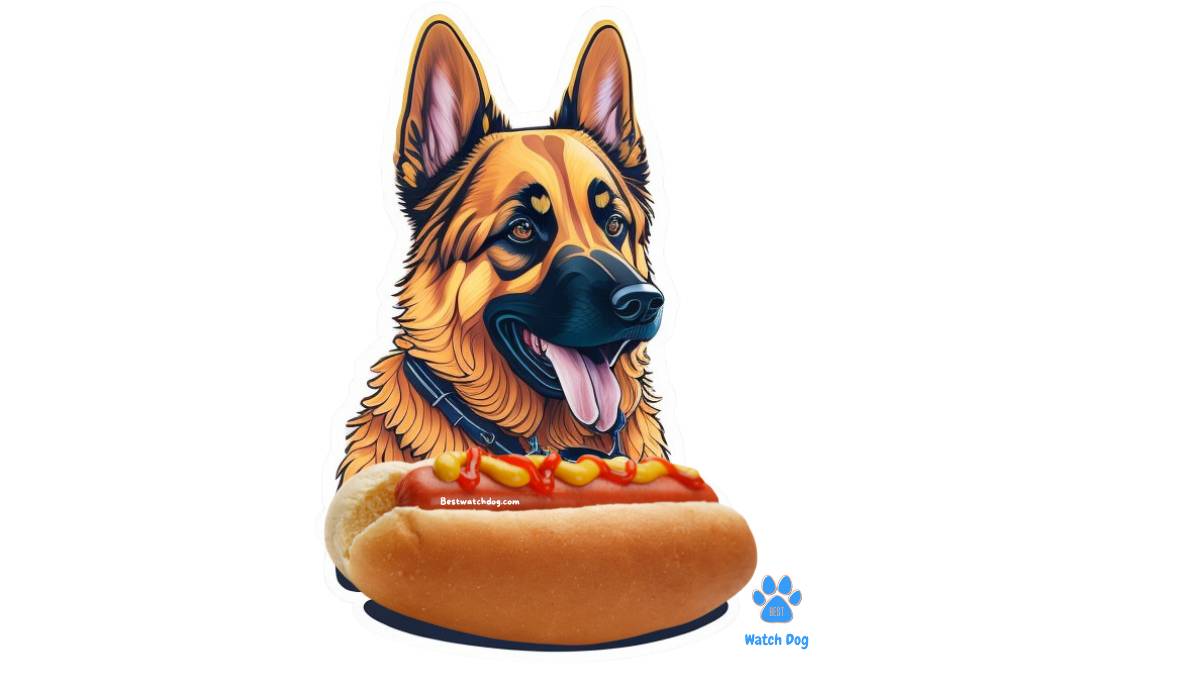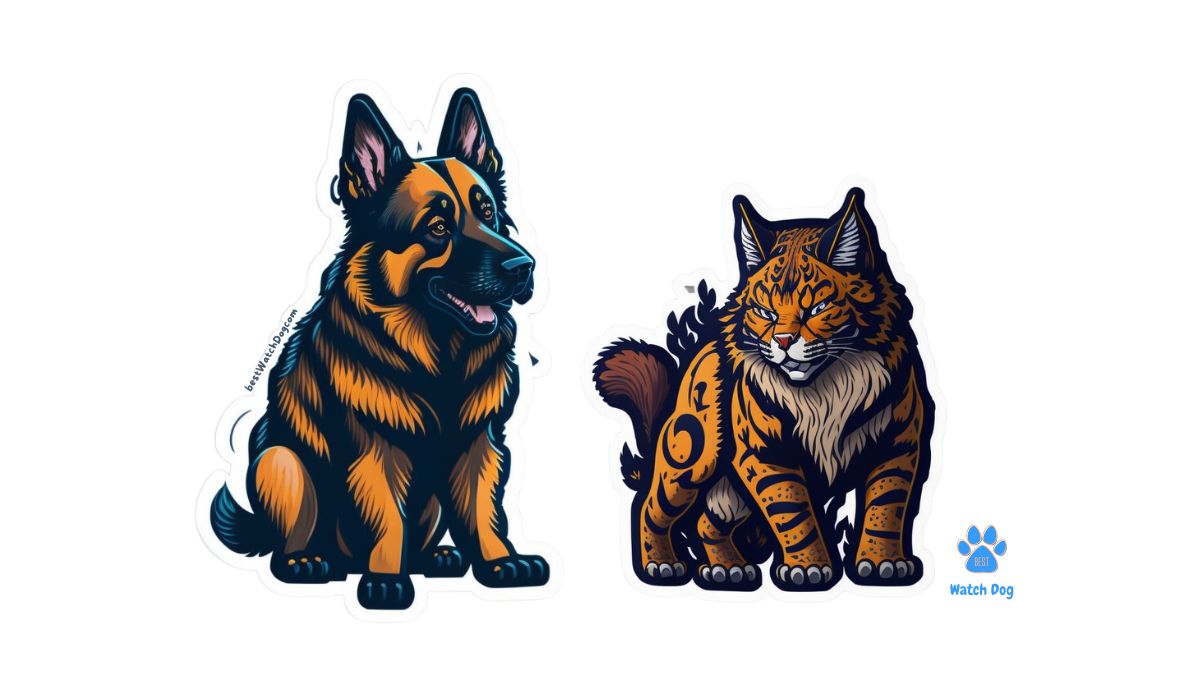As a German Shepherd owner, you understand the importance of keeping your dog healthy and active.
However, weak back legs can lead to mobility problems and even joint issues.
If you’ve noticed your GSD struggling to keep up or becoming easily tired, it’s time to take action.
In this blog post, I will share on how to make a German Shepherd’s back legs stronger and I will also provide you with tips and tricks to improve their strength and mobility.
From targeted exercises to specialized diets, I will equip you with the knowledge you need to keep your German Shepherd happy and healthy.
Don’t let weak back legs slow your dog down – read on to learn more.

The Importance Of Strong Back Legs For German Shepherds
It’s no secret that strong back legs are essential for German Shepherds.
German Shepherds are a large breed with unique physical features that make them susceptible to back leg weaknesses and injuries.
Back solid legs are essential for their overall well-being, and understanding the reasons for this importance for dog owners.
Here are 3 reasons why it is important for your German shepherds to have strong legs;
Mobility And Balance:
German Shepherds rely on their back legs for propulsion, stability, and balance
Weak back legs can lead to difficulties in movement and an increased risk of injury
Joint Health And Longevity
German Shepherds are prone to hip dysplasia, a joint disease that causes pain and decreased range of motion in the back legs.
Maintaining strong back legs can help prevent or manage joint issues and promote overall joint health.
Quality Of Life
Strong back legs are crucial for your German Shepherd’s ability to play, run, and engage in daily activities.
How To Make German Shepherd’s Back Legs Stronger?
Targeted exercises are the most effective way to improve your German Shepherd’s hind leg strength. Some recommended exercises include walking uphill, using a balance ball, and performing hind leg lifts. Additionally, a healthy diet and supplements can help support muscle growth and repair. Be sure to consult with your veterinarian before beginning any new exercise or dietary regimen for your dog.
Below are some other effective ways that you can use to strengthen your GSD back legs.
To strengthen a German Shepherd’s back legs, consider the following:
1. Nutrition And A High-Quality Diet:
When it comes to feeding your German Shepherd, protein is a must-have!
It’s the main nutrient they need to grow strong muscles and keep their immune system in tip-top shape. Aim for at least 22% of their diet to be protein; once they reach their adult weight, you can reduce it to 18%.
And remember about healthy fats, like omega-3 fatty acids!
They’re super essential for keeping your pup’s energy up, their skin and coat shiny and healthy, and for their anti-inflammatory properties. Plus, who doesn’t love a shiny coat?
To support your German Shepherd’s growth and health, provide a well-balanced diet with plenty of high-quality protein, healthy fats, and all the essential vitamins and minerals.
You’ll help their muscles and joints stay healthy and strong. Also, Check out our post on Best Probiotics For German Shepherd Dogs. I will walk you through our favorite Probiotics in 2023.
Also Read: Is a raw diet good for German Shepherds?
2. Disease Management And Veterinary Care:
Regular vet visits and proactive management of diseases like hip dysplasia and arthritis can help maintain your dog’s overall health.
3. Regular And Targeted Exercise:
Engage in targeted exercises such as hill work, swimming, controlled walks, sit and stand exercises, and walking or jogging up hills to strengthen the back legs.
Avoid overly strenuous or high-impact exercises.
Below I made a table explaining the best exercise you can use to improve your GSD’s back legs.
| Exercise Number | Exercise Name | Description |
| 1 | Sit and Stand | Have your German Sheperd sit and stand repeatedly, using a treat to reward them every time they sit. This will gradually build their hind leg muscles. |
| 2 | Walking/Jogging Uphill | Walk or jog with your dog up a hill or inclined surface. This forces your dog to put more strain on their back legs, helping to build muscle, and uneven surfaces help improve balance and exercise different muscles. |
| 3 | Treat Luring | With your German shepherd standing between your legs, use a treat to lure their head left and right, encouraging them to touch their nose to their shoulder and eventually their hip. This helps exercise their core muscles as well as their hind legs. |
| 4 | Walking Backwards | Using a treat, encourage your dog to walk backward. This exercise helps to build hind leg muscles. |
| 5 | Hydrotherapy | Engage your dog in water-based exercises like walking, moving, or swimming. Hydrotherapy is highly effective in building back leg muscles, and classes and facilities are available that specialize in this type of therapy for dogs with mobility issues. |
4. Weight Management:
Maintain a healthy weight to reduce stress on joints and prevent injury.
5. Use Joint Supplements:
Here is a list of supplements to help strengthen your German Shepherd’s back legs, promoting overall health and mobility:
- Glucosamine Hydrochloride: According to the AKC, glucosamine supplements may be worth a try to relieve your dog’s arthritis pain.
This popular joint supplement is often given to large dogs like German Shepherds.
Glucosamine helps treat and prevent inflammatory conditions like arthritis and hip dysplasia by enhancing the body’s ability to repair damaged cartilage.
- Green-Lipped Mussel: When combined with glucosamine and chondroitin, the green-lipped mussel can help reduce pain and maintain joint function in dogs with mobility issues.
This supplement supports overall joint health and can help your German Shepherd feel more comfortable moving around.
3. Fish Oil: Fish oil contains omega-3 fatty acids, which can help reduce inflammation and improve joint health.
4. Vitamin E: Vitamin E can help improve muscle strength and reduce muscle damage.
Remember, it is crucial to consult with your veterinarian before starting any new supplement or exercise regimen to ensure it suits your German Shepherd’s specific needs.
Investing in the right supplements and following a proper care plan can improve your dog’s mobility and help them enjoy a happier, healthier life together.
6. Physiotherapy and Massage:
Regular massages and physiotherapy sessions can help improve circulation and muscle tone in your dog’s back legs.
Hydrotherapy and Low-Impact Exercise: Engage in low-impact exercises like hydrotherapy to strengthen your dog’s back legs without causing additional strain on their joints.
7. Injury Prevention And Care:
Be mindful of your dog’s activities and prevent injuries by avoiding high jumps or other potentially harmful movements.
8. Alternative Therapies:
Acupuncture and laser therapy can support your dog’s back leg strength and overall health.
9. Assistive Devices:
Wheelchairs, mobility harnesses, and slings can provide support and improve mobility for German Shepherds with weak back legs.
10. Surgical Intervention (When Necessary):
Consult with your veterinarian to determine if surgery is necessary to address severe joint or muscle issues in your dog’s back legs.

Recognizing Symptoms of Weak Hind Legs in German Shepherds
German Shepherds are prone to hind leg weakness, which can be caused by various factors such as hip dysplasia, arthritis, and spinal cord issues.
To help identify and address this issue in your furry friend, it’s essential to recognize the common symptoms of weak hind legs in German Shepherds.
Limping Or Favoring One Leg:
Your German Shepherd might limp or put more weight on one leg to compensate for the weakness in the other leg.
Difficulty Standing Or Sitting:
Struggling to stand up or sit down can indicate discomfort or weakness in the hind legs.
Decreased Activity Levels:
A decrease in interest in playing, going for walks, or heading outside may signify discomfort or weakness in the back legs.
Swelling Or Pain In Joints:
Swollen hips, stiffness in joints and legs, or signs of pain in the back legs can be indicators of an underlying issue affecting hind leg strength.
Common Causes Of Hind Leg Weakness In German Shepherds
German Shepherds are a breed of dog that can be prone to hind leg weakness due to several different conditions.
Here are some common causes:
1. Arthritis:
This degenerative joint disease can affect German Shepherds as they age. It can cause pain and stiffness in the hind legs, making it difficult for them to move around.
2. Hip Dysplasia:
This genetic condition can cause the hip joints to develop abnormally, leading to arthritis and hind leg weakness. It can be diagnosed through X-rays. (1.)
3. Canine Degenerative Myelopathy:
This progressive neurological disease affects the spinal cord and can cause hind leg weakness and paralysis. It is usually seen in older dogs.
4. Diabetes:
Diabetes can affect the nerves in the hind legs, leading to weakness and loss of coordination.
5. Fibrocartilaginous Embolism:
This spinal cord injury can occur when a piece of cartilage breaks off and blocks blood flow to the spinal cord. It can cause hind leg weakness and paralysis.
6. Limited Mobility:
Dogs that are overweight, have poor muscle tone, or have been inactive for an extended period of time may experience hind leg weakness due to limited mobility.
Conclusion: A Comprehensive Approach to Strengthening Your German Shepherd’s Back Legs
Back solid legs are essential for German Shepherds’ mobility, balance, and overall quality of life.
To maintain them, provide proper nutrition, exercise, weight management, joint supplements, physiotherapy, injury prevention, and care, and consider alternative therapies or assistive devices if necessary.
Common causes of hind leg weakness are arthritis, hip dysplasia, degenerative myelopathy, diabetes, fibrocartilaginous embolism, and limited mobility. Consult a veterinarian if you suspect hind leg weakness.
German Shepherd Back Legs FAQ

At What Age Do German Shepherds Start Having Hip Problems?
Some German Shepherds may begin showing signs of hip dysplasia as young as four months old, while others develop osteoarthritis as they age.
However, in many cases, the signs of hip dysplasia become apparent once the dog is around two years old.
To reduce the risk of hip dysplasia in offspring, ensure that only German Shepherds with healthy hips are bred. (1.)
How Can You Tell If A German Shepherd Has Bad Hips?
Symptoms of hip dysplasia in German Shepherds include a “bunny hop” gait, limping, lameness in the hind legs, and decreased range of motion.
If you notice your German Shepherd whining when walking, limping, hesitating or showing reluctance when moving its back legs, it may have hip dysplasia.
The first sign of pain in young dogs may appear as difficulty climbing stairs, jumping into a car, or exercising freely. If you suspect hip dysplasia, consult a veterinarian for a proper diagnosis and treatment plan. (1.)
Can A German Shepherd Recover From Hind Leg Weakness?
Yes, a German Shepherd can recover from hind leg weakness with proper treatment, exercise, and diet. Recovery depends on the underlying cause, and it is best to speak to a veterinarian for a plan of action.
(1.)

(Author)
Justin is a protection dog enthusiast. He has years of experience teaching and training dogs. He enjoys sharing what he’s learned. Read More





